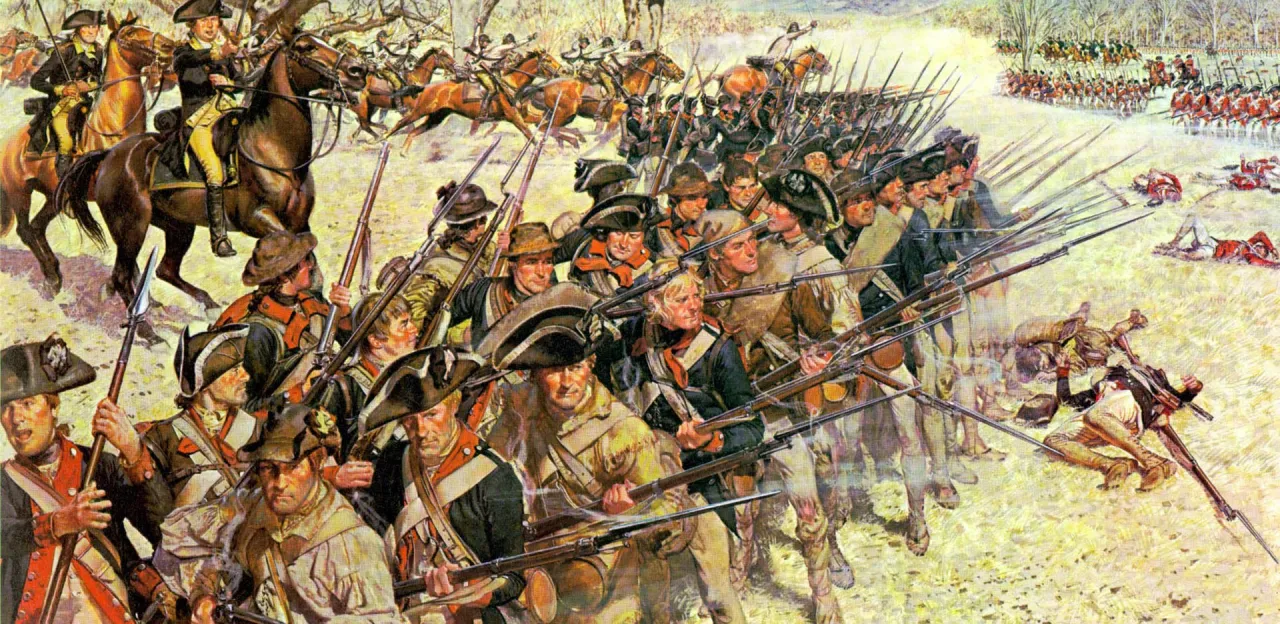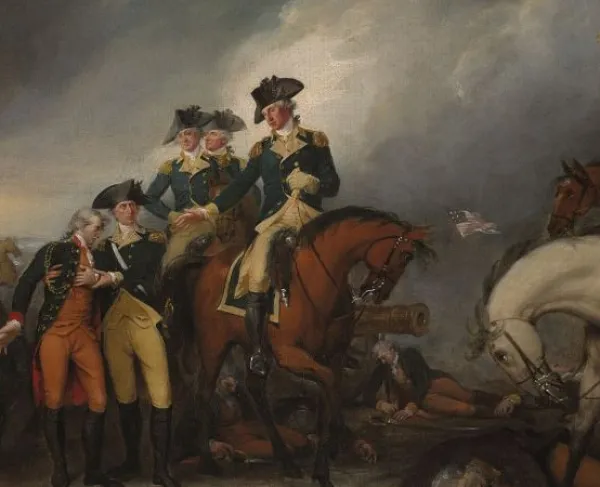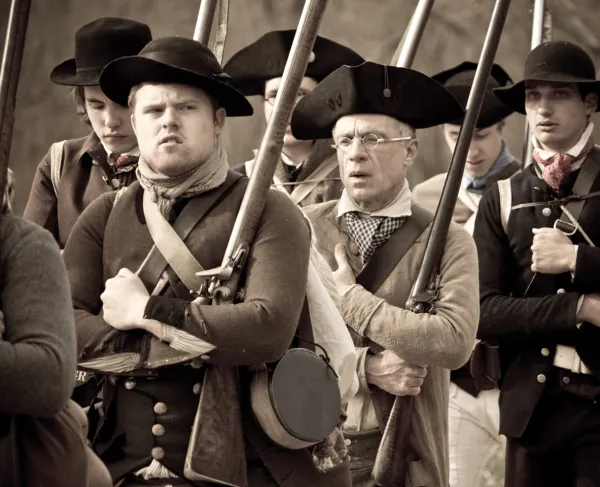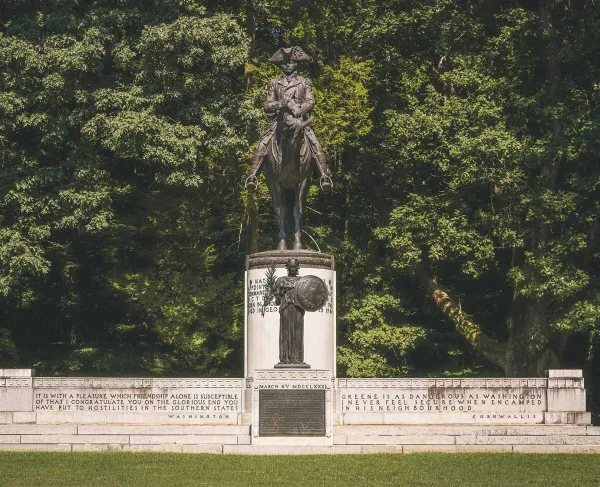Guilford Courthouse

On the morning of March 15, 1781, British General Charles Lord Cornwallis's force of 2,100 men discovered the Americans holding a defensible position on elevated ground about one and a half miles from the Guilford Courthouse near present day Greensboro, North Carolina. His front faced a plantation with a large field straddling both sides of the road, with two more further over on the left separated by 200 yards or so of woodland. To his right beyond the fields, the woodland extended for several miles. On the far side of the first field was a fenced wood, 1 mile in-depth, through which the road passed into an extensive cleared area around the court house. Along the edge of this woodland was a fence forming the American first line of defense and a six-pound cannon on each side of the road.
Greene’s defense consisted of three lines with upwards of 4,500 men at his disposal. The first line was held by North Carolina militia. On their flanks were backwoods riflemen used to snipe at the British as they advanced across the field of battle. In the second line Greene employed the Virginia militia. They were supported by artillery near their center. Battle hardened units of the Virginia Regiment, Delaware Infantry, and well-disciplined 1st and 2nd Maryland Regiments completed his third and most formidable line. These troops were placed on an angle facing the road.
At 1:30 p.m. Cornwallis launched his attack up the west side of the road after an initial artillery barrage. As his troops got within 150 yards of the fence line the Americans opened with a volley, with the British pressing on, returning fire only when they got within range of their guns. On command, they surged forward only to be scattered by elements of the North Carolina militia posted along the picket fence who propped their rifles on the fencing and took good aim. According to one member of the 23rd Regiment the North Carolina militia “had their arms presented and resting on the picket fence… they were taking aim with nice precision.” Still their advance continued, spearheaded by the 33rd Regiment of Foot. The North Carolinians fired one more time and then retreated into the woods to their rear. To the British their retreat appeared a rout as they abandoned equipment as they fled. The British assault on the second line ran into stiff resistance and the 33rd tried to move around its flanks and hit the third American line. In breaking through the first two lines the British sustained heavy casualties.
Advancing up the center were the 71st Regiment and the 2nd Guards. On their right flank American cavalry commander, "Light Horse" Harry Lee and his mounted troops were able to engage Hessians and the 1st Guards effectively keeping them from making a significant contribution to the British effort. British artillery and light dragoons led by Banastre Tarleton tried to keep pace with the red-coated forces that moved forward in front of them.
Open ground soon faced the 2nd Guards in the vicinity of the court house. Immediately facing them was a large contingent of the Continental Army whom they chose to attack, capturing two six-pound canons. As they forced the Continental troops back into the woods Lt. Col. William Washington’s Light Dragoons and the 1st Maryland Regiment counterattacked and blunted the British advance. Cornwallis ordered forward a section of guns to repel the dragoons. In the process, some of his own men may have been hit by friendly fire. This incident was blown out of proportion by Col. Henry Lee, who, claimed that Cornwallis cold-heartedly ordered his gunners to fire on his own men. Since Lee was not present on this part of the battlefield, the veracity of his statement is questionable.
Greene ordered his forces to break off the counterattack and leave the field.
It was a dear-bought pyrrhic victory and given his casualties and diminished supplies, Cornwallis opted to head to the Virginia coast where he could be refitted, reinforced and resupplied. Unfortunately for Cornwallis and the British cause the war would come to an end that October in along that same coast at Yorktown.
Related Battles
1,310
532





